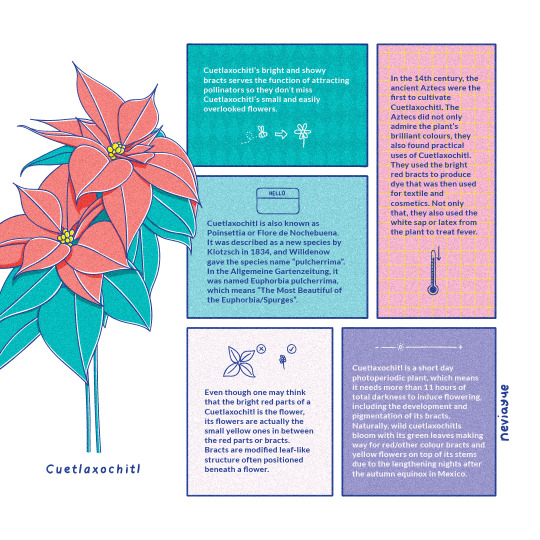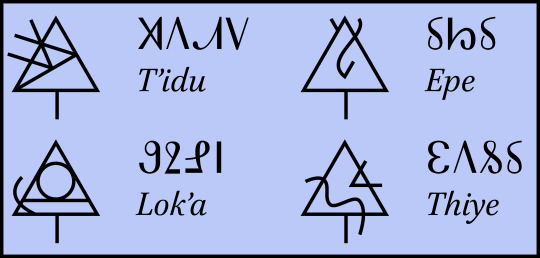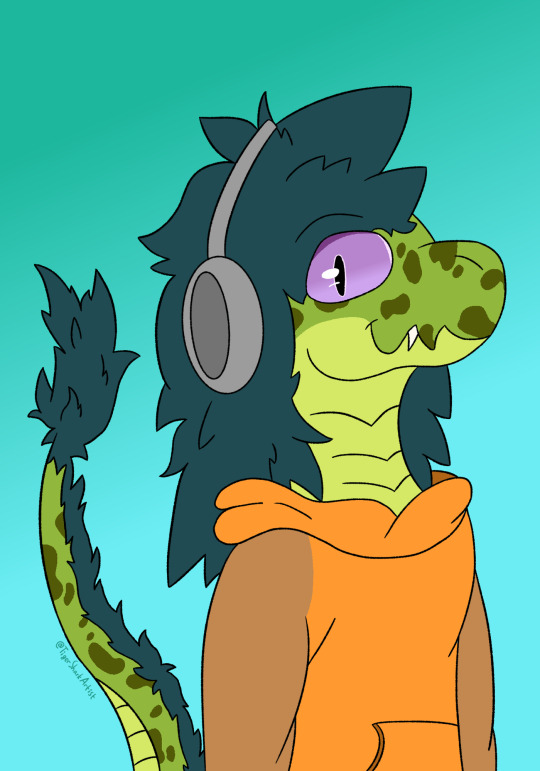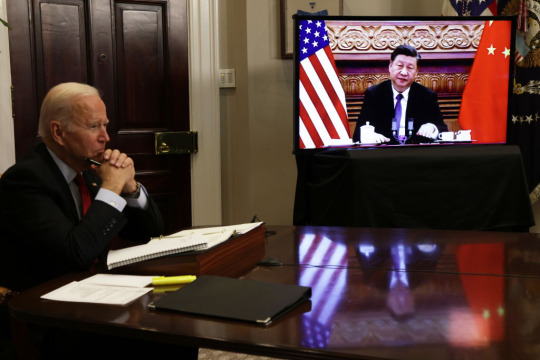#kwet
Explore tagged Tumblr posts
Text

KWET NO Happy (upcoming) new year :3
233 notes
·
View notes
Text
TIL Poinsettias are from mexico, and are called cuetlaxochitl
1 note
·
View note
Text

Cuetlaxochitl (kwet-la-sho-sheet), in Nahuatl, was a sacred flowering plant to the Aztecs or Mexica. From the leaves, the Mexicas could boil a tea to help the flow of breast milk in nursing mothers and use it as a red-purple dye for fabric and crafts. The sap was also used to soothe fevers and skin diseases. It also holds seasonal religious significance because it blooms during the winter solstice, the birthday of Huitzilopochtli, the god of sun and war.
#cuetlaxochitl#nahuatl
28 notes
·
View notes
Text

What a funny snake guy! Part of an art trade with @featheredsnek of his lad Kwet!!!
115 notes
·
View notes
Text


Kwet Chill Times
Art trade with @featheredsnek! Really pleased with this one, I love how the lighting came out.
80 notes
·
View notes
Text



cuetlaxochitl | By Nevi Ayu E.
It's finally the end of the year, but my Birth Flower series isn't done yet, still have two more to go... And have a very happy birthday December babies, hope next year will be the most bright and beautiful, just like this showy kwet-la-sho-she!
#illustrations#illustration#illustration poster#infographic#pattern design#floral pattern#birth flower#december#cuetlaxochitl#poinsettia
10 notes
·
View notes
Text
T’owal T’uesday #8

A few weeks ago I posted the beginning of my T’owal translation from the LCC10 relay. Here’s the whole thing!
E sonden do fyonte le hú mínol. Bmétho minol hu Lok’a há hyán hontsu pasyo mo.
Wís sí fdu hu Epe tyót sgen sonden. Há mó p’áth yi le e hliyi sos mo, tu mó só il sin swa tsin slod yi yu. E pwa tuf sin le e tyot sondem mo sál swa tsim p’ith Épe fén fan kseg kwet do sk’etut le. Kséd sk’etut le p’ith ts’ún swa xi Epe sí tuf le, a lál swa mó bós í. “Hlég xmen hné. Fút li hné sk’étut le su, ix wás li hné kúth ex hne sú, a fút hox li hné.”
Wís sín hu T’idu sígu sonden. Kwét a wútsyup bmétho mó, tu p’éf mó thwí bmetho hu Thiye. P’éf mó ts’úm bos dne dus bos e sonden a thbáha bos. Ús í ót, sál mó fén t’es.
Mén tso we mó fén le Epe o si tuf le e sonden, a wól mó í. “Os ól sú tsés i, Thíye a Lók’a bwúd li Épe, túl k’a li dne Lok’a Épe Thíye. Ól li nul ot sú ts’óhef o Epe, a há li sú t’an Thíye. P’of ts’ún Lók’a sk’étut le mo (uli then sk’etut su), tu sk’étut su a sk’étup p’ith úli k’a then sk’etup mo!”
T’ídu mén fén t’es mo Épe, a últs’a mó ts’óhef o bos nul fen tul thwi bmetho. Gwíd Épe sk’étup p’ith le Thíye a Lók’a, a túl Épe Thíye, a wás Épe Thíye T’ídu.
Tu nás Lók’a dús mo, a sdóye mó sk’étut le mo. P’út Lók’a a sí yeftsu le mo T’ídu a sk’étut le bos, psíl ót í, ól li bós dné sonden. Kséd ubsul yu sk’etut le a sí thdat yu thdó de i, tsím bmétho hyán hontsu pasyo mo, a bwét fén thdo. Nás dne sonden T’ídu a sí yeftsu le mo, a xí lot Thíye dús mo.
Below is the English translation, and some more info.
In a large forest of birch trees there was a kingdom. The king, who was named Lok’a, had a knife hidden in his crown.
In another part of the forest there lived a creature named Epe. It had long hair on its entire body, but walked like a person on two long legs. When people would travel through its part of the forest, Epe would create a magical illusion of a large, evil army. The magical army would take the travelers to Epe, and it would say to them, “You must choose. Either my soldiers kill you, or you give me all of your things and are not killed.”
Outside of the forest lived a man named T’idu. He hated and was disgusted by the king, but he desired the king’s sister, Thiye. He wanted to take her from her home in the forest and marry her. To accomplish this, he made a plan.
He had been told of the actions of Epe with the travelers in the forest, and he thought, “If I can make Thiye and Lok’a encounter Epe, Epe will take Thiye away from Lok’a. Then I’ll be able to trade with Epe, and have Thiye for myself. Lok’a might might bring his army (which is bigger than mine), but my army and the magical army combined will be bigger than his!”
T’idu told Epe his plan, and promised to trade with it after the capture of the king’s sister. Epe sent the magical army after Thiye and Lok’a, took Thiye, and gave her to T’idu.
But Lok’a ran home and gathered his soldiers. He and his followers surprised T’idu and his soldiers before they could leave the forest. The two real armies and their leaders fought until Lok’a used his crown’s hidden knife, and the battle ended. T’idu and his followers fled the forest, and Thiye returned to her home.
As I’ve previously mentioned I’ve changed the T’owal alphabet several times since writing this text. For whatever reason the first sentence of it has really stuck in my head so whenever I make a change to the alphabet I write that sentence out to see how it looks. However, I usually change one thing which has bugged me about the text since about two days after it was too late to fix it for the relay: there’s a superfluous plural marker (le). T’owal doesn’t typically redundantly mark the plural: if you say something about some birch trees, you would say fyonte le, but if you mentioned them again you would just say fyonte, since we already know it’s multiple trees. If you need to switch to referring to just one, you’d say fyonte wi, literally “one birch tree.” In writing this opening sentence I was thinking a little too literally of the English wording, “a forest of birch trees.” Even though fyonte le has not previously been said, it’s obvious that there’s going to be more than one tree in the forest.
Tense is similarly not marked on every verb. I tend to use one tense marker in a T’owal text for a given section, applying it to the first verb and then letting that tense be implied for the rest (until another tense marker potentially changes it). This text is meant to have a slightly out-of-time feeling, so it doesn’t even start with a tense marker at all—the first one doesn’t appear until the fourth paragraph. When they are used, it’s either in reference to the reference time frame of the story (using the past tense marker we for “He had been told”), or within the dialogue of the characters.
The last thing I want to talk about is the character names. In the text I received there were five names, including one for the kingdom. Since that one was used only once, I decided to omit it. In earlier stages of the relay most people borrowed the proper nouns from the previous language, fitting them to the sounds of their own conlang. Since the language that preceded mine was UNLWS, which has no spoken component, the names that had been passed along were removed and replace with UNLWS-style names, which take the form of equilateral triangles with something inside that represents the person in some way (usually one or more UNLWS glyphs that relate to them). Here are the four characters’ names as they appeared in UNLWS:

These are related to the UNLWS glyphs for (from left to right) movement along a surface, a tool, shiny, and a combination of shiny and snake. Since there isn’t (yet?) a way to form “native” T’owal names, I didn’t really have a way to make names from the equivalent T’owal words. So instead I went based on the resemblance of parts of the glyphs to certain T’owal letters. In the third name, for example, one part is very reminiscent of the T’owal letter t’, and the whole thing is very angular so I used mostly angular letters, and ended up with the name T’idu. The curve in the second name was somewhat like the letter e, and a little like p as well, so that became Epe. Continuing along those lines, I ended up with these four names:

Of course, the changes in the T’owal alphabet have completley erased most of those letter resemblances since then! Oh well. Here’s how the four names look in the current alphabet:

8 notes
·
View notes
Text

Forgot to post it, but here's my submission for the Snake Surplus contest on the Comic Gang Discord server :3 Featuring the snake with the fluffiest mane, @featheredsnek 's Kwet! I had a lot of fun drawing this :3
8 notes
·
View notes
Text
Today, a new form of corporate colonization is taking place through surveillance and digitalization of knowledge and control. Just as in past European colonial undertakings, when private corporations helped dispossess, murder, and enslave Indigenous populations in the “pathological pursuit of profit and power,” sociologist Michael Kwet argues that now, instead of the conquest of land, Big Tech corporations are colonizing digital technology. A handful of US multinational corporations control everything from smartphones to search engines to business and social networking platforms to online advertising, and so much more. As Big Tech products are integrated into societies around the world, the companies—and the United States—“obtain enormous power over their economy and create technological dependencies that will lead to perpetual resource extraction.”
Abolishing State Violence: A World Beyond Bombs, Borders, and Cages, Ray Acheson
6 notes
·
View notes
Note
48, 39, 31, 24, 4, 6
4:A character you rarely talk about? Pretty sure we had this question in the server recently and I struggled to answer it then. Ehhhh lets go with Wesley, he's a musician cursed by an illness that was meant for his brother to suffer through but his father got it shuffled onto him instead. He falls into the same catagory of power as Shyshie and Coe later on into the story. But like. Much much later so I never talk abt it
6. Two OCs of yours that look alike despite not being related?
uhhhhhh probably like. Half my otter characters. Cause in general they're all various shades of brown and. otter shaped.
24. If you could meet one OC of yours, who would it be and why? Hmmmmm Kwet because I just want to actually get a sense of his scale cause even tho I love making my alien characters just rediculously large I still struggle actually envisioning their scale
Also he my sad boy and i wants to see him
31. Pick one OC of yours and explain what their tumblr blog would be like djfsnm uh ok. Shyshie would have two blogs. One where she exclusivly posts stuff like aesthetic ocean pictures and quotes from poetry and books about the sea and it'd be all pretty and nicely set up. And then another one where she just gets into the most awful discourse and posts the worst takes known to humanity because she is a mysterious sea creature but she is also irrevocably a gremlin goblin cat child
39. Introduce any character you want
Remus. He is my shameless genshin oc. He eats glass and is cooler than you. He also has sad pathetic dad energy. He's a dead star and also tainted by the Abyss. He's in a roleplay that I still need to write a response to.
48. OC who is a perfect cinnamon roll, too good for this world, too pure I feel like none of my characters are this anymore. Sometimes they start that way but they always evolve past it. Shyshie and Kwet were supposed to be like this but uh.... maybe Aurin? He's just a lil transporter operator. He's only ever had to use his gun a few times.
2 notes
·
View notes
Text

Mocha weakness detected
272 notes
·
View notes
Text
Dutch songs I think you should know
Ik haat hem voor jou - Froukje & S10
I'll hate him for you
Ik fok het op en kwets mezelf I fuck up and hurt myself
Je kent me toch Jij snapt dat wel You know me, you get it
Was je een drankje dan dronk ik jou puur If you were a drink I would drink you pure
Mijn lieve schat ik ga voor jou door het vuur My love I will go through fire for you
Iemand als jij is voor mij één in miljoen Someone like you is one in a million
Hoe we dit samen doen How we manage this together
Haat je je ex Ik hat hem voor jou Do you hate your ex? I'll hate him for you
Als niemand me wil dan trouw ik met jou If no one wants me, I'll marry you
Hoe het ook loopt met jou word ik oud However things will go I'll grow old with you
Blijf je bij mij Dan blijf ik bij jou (bij jou jij jou) Stay with me I'll stay with you (with you, with you)
Ik weet soms niet hoe vriendschap werkt I don't always know how friendship works
Maar met jou gaat het vanzelf But with you it goes naturally
Neem al je tijd en kijk de kat uit de boom* Take your time to watch what happens
Ik weet allang hoe dat dan werkt in jouw hoofd I already know how it works in your mind
Naar iemand als jij was ik altijd al op zoek I was always looking for someone like you
We kunnen dit samen doen (doen doen) We can do this together (do, do)
Haat je je ex Ik hat hem voor jou Do you hate your ex? I'll hate him for you
Als niemand me wil dan trouw ik met jou If no one wants me, I'll marry you
Hoe het ook loopt met jou word ik oud However things will go I'll grow old with you
Blijf je bij mij Dan blijf ik bij jou (bij jou jij jou) Stay with me I'll stay with you (with you, with you)
*Dutch staying. De kat uit de boom kijken. Litteral translation: Watching the cat out of the tree. Meaning: Waiting for something to happen.
0 notes
Text
Bij het afscheid zoenen mijn vriend en ik elkaar op de mond en komt er een tong bij; dat is mijn vermoeden, maar ik weet het niet zeker. Er gebeurt iets bij het afscheid nemen. Het kan ook dat ik iets lelijks zeg en mijn vriend kwets. Maar ik denk dat het andere waar is: dat we intiem zoenen, op initiatief van de leeftijdloze man, en dat ik het toelaat en me dan omdraai en wegloop. En het weer vergeet, maar mijn vriend vergeet het niet.
Hallo Muur - Erik Jan Harmens (p.162)
0 notes
Text
Digital Warfare: US 🇺🇸 And China 🇨🇳 Go Head To Head In Cyberspace
— Mariam Amini

As the start of the new year sees Israel’s war on Gaza rage on, the US faces an ongoing battle in the cyber realm back home.
According to one survey by Gallup and Knight Foundation, trust in US media is so low that half of Americans believe national news outlets deliberately mislead them.
This rise in distrust is a common global pattern, with the UK having the second lowest levels of media trust according to a study of 24 countries by King’s College London. Held as part of the World Values Survey, just 13% of British respondents expressed confidence in the press.
Meanwhile, news consumption on social media is only growing, with data showing a third of Americans under the age of 30 now get their news on TikTok.
2023 saw the White House ramp up its efforts to manage the Chinese-owned tech giant, which has over 150 million users in the States, the highest of any country globally.
In March, platform CEO Shou Zi Chew even appeared before Congress, in an attempt to dispel allegations over the app’s collection of sensitive user data, as well as censorship of any content that goes against China’s Communist Party.
It’s all slightly ironic, considering the intense regulatory crackdown on domestic tech companies by Chinese authorities in 2020, which even saw e-commerce site Alibaba fined $2.8 billion in a landmark antitrust case in 2021.

US government and European Union's parliament ban TikTok From staff mobile devices
The Asian nation’s technology sector has since conformed to new regulations, much like the control US officials perhaps wish to instill over TikTok.
In December, US presidential primary Nikki Haley publicly condemned the platform. She says: “We really do need to ban TikTok once and for all. For every 30 minutes that someone watches TikTok every day, they become 17% more antisemitic, more pro-Hamas.”
Her statements have since been debunked by Generation Lab, the data company behind the survey she references. However, it does beg the question of why TikTok faces greater reprimand when, for instance, Silicon Valley-owned Meta has already been proven to systematically censor Palestinian content in a review by Human Rights Watch.
So then, one must ask, is the real concern about data protection or threats to Silicon Valley business interests, or maybe even anti-Israeli sentiment in general?
While Instagram saw a decent growth of 47.8% between 2020 to 2022, TikTok doubled its user base. According to polling data shared by Axios, the majority of these users express pro-Palestinian sentiment. This is especially frequent among young people on the platform.
The tech giant has confirmed this natural trend, emphasising a need to listen to users: “This is a really difficult time for millions of people around the world and in our TikTok community.”
“We feel it’s important to meet with and listen to creators, human rights experts, civil society and other stakeholders to help guide our ongoing work to keep our global community safe.”

U.S. President Joe Biden participates in a virtual meeting with Chinese President Xi Jinping
So, would the North American giant really ban TikTok? And if they did, would more countries follow suit? TikTok was banned in India in 2020 over claims of illegal data collection. This occurred shortly after geopolitical tensions at the border between India and China.
The video-sharing app was also slapped with a $368 million fine by the European Union for data beaches in the same year.
However, the company has since taken steps on advancing data security in partnership with Oracle Cloud Infrastructure. According to TikTok U.S. Data Security, as of June 2022, 100% of US user traffic is now routed to the US-based computer software company.
As for the question of censorship, visiting fellow Michael Kwet at Yale Law School’s Information Society Project believes: “There’s no reason to believe TikTok will offer substantially more diverse views across the global media landscape”.

In an interview with Al Jazeera, he says: “When confronted with content moderation decisions, TikTok will do what all big social media companies do: remove content at the request of entities with power, so long as it becomes too costly to disobey.”
In the midst of Israel's ongoing aggression in the besieged Gaza Strip, alongside rampant misinformation and media bias - one thing is clear: access to honest, independent journalism centred on human values, not corporate, is needed like never before.
0 notes
Text
The word banquet is like an electron to me. If I come across this word while i was casually mindlessly reading a sentence and three things would either (or all) pop in my head (I either pronounce it as bang-kwet or bang-kway or I'd just think of a table filled w food)
but if I would go back to do a once over to that word and focus on it and whatever last thing that popped in my mind is the ONLY right way for me to associate it at that current time and the other two that were left just feels like imperfections meant to sin against god
Like the ones that god should've flooded away during Noah's ark using holy water boiled in the deepest parts of hell
Even tho there's one "right" way to say it, my mind would just switch from those three and would lead me to do a google search numerous times to see if the electron I landed on this time is the same as what google dictates or not lol
This happens lots of time and I would quickly forget again what's the actual right one after. it's an endless cycle 😮💨
You get wut I'm saying?
rn, my brain landed on table of food so either pronunciation just sounds shitty to me
0 notes

